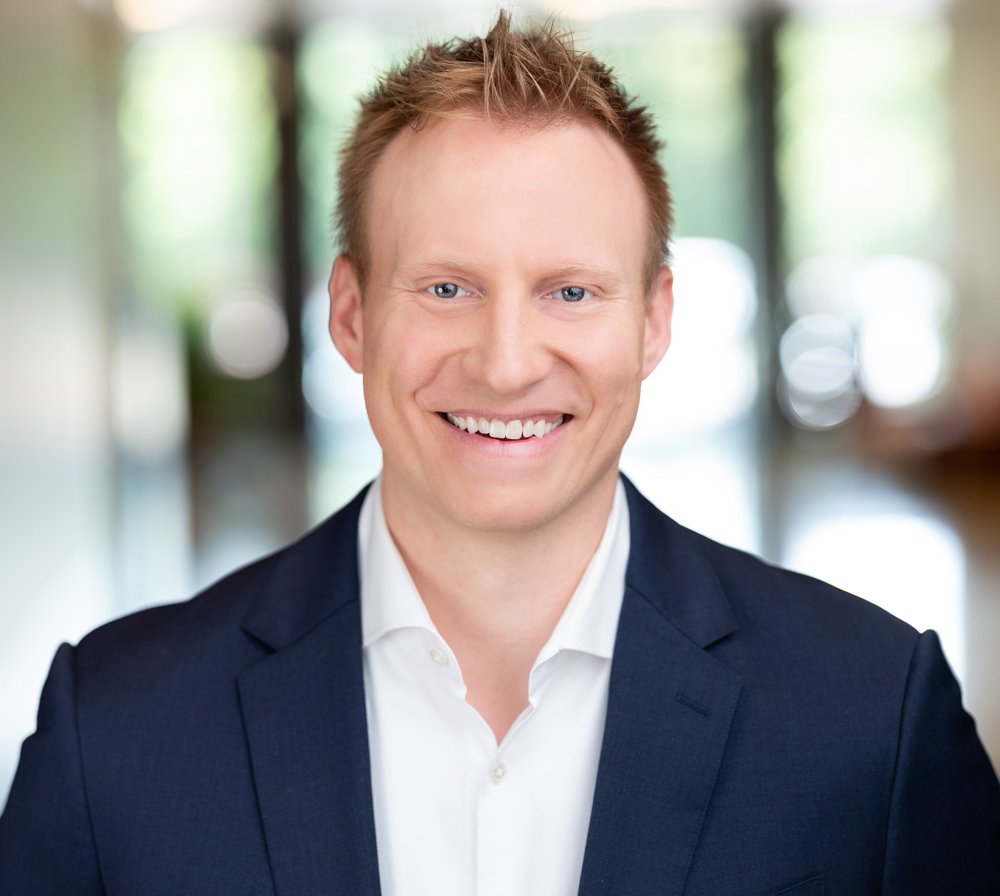Key Takeaways
- Within the highly consolidated U.S. architectural paint industry, Sherwin-Williams’ dominant market position allows it to show durable pricing power even in inflationary environments.
- Sherwin earns its pricing power through its time-tested consumer-centric strategy and controlled distribution model, as well as high barriers to entry and favorable market dynamics.
- As peers retrench, Sherwin continues to expand, adding new stores and increasing sales as more consumers hire professionals — a core constituency for Sherwin’s products — for their residential and commercial painting needs.
The single most important decision in evaluating a business is pricing power… If you’ve got the power to raise prices without losing business to a competitor, you’ve got a very good business.“
— Warren Buffett
In recent years, the importance of pricing power has become more obvious amid rising global inflationary pressures, as businesses have attempted to pass along higher costs to customers without adversely impacting demand or sales volume. But as the Buffett quote above suggests, it’s easier said than done as there’s more nuance to it than just raising prices. Ultimately, the strength and durability of a company’s competitive advantages influences the ultimate effectiveness of price increases, separating quality companies from lesser counterparts.
Jensen’s Quality Growth investment process tends to favor such advantaged businesses. At Jensen, we seek to identify and evaluate high-quality companies, which we define as profitable businesses with strong competitive advantages that are capable of generating returns above their costs of capital in a variety of environments.
The Sherwin-Williams Company (SHW), the world’s leading paint and coatings business, was added to the Jensen Quality Growth strategy in 2024 and provides an excellent example of pricing power in action through its Paint Stores Group (PSG) division.
Founded over 150 years ago, Sherwin-Williams operates a chain of branded specialty paint stores that have long been considered the company’s “crown jewel.” The business today is purpose-built to serve professional (pro) painting customers through its leading network of sales reps and company-operated specialty paint stores across the U.S. and Canada, blanketing pro clients in high-touch customer service with the aim of making them more productive and profitable.
Sherwin’s Paint Stores Group (PSG) division represents its North American architectural paint business, serving as exclusive outlets for Sherwin-Williams branded paints and stains. PSG is Sherwin’s largest and most profitable segment, representing 56% of 2023 sales and 63% of profits. Sherwin’s two other reporting segments are its growing industrial Performance Coatings Group and its non-Sherwin-branded Consumer Products Group, which sells products like Valspar brand paints on a wholesale basis through retail partnerships, including large home centers Lowe’s and Menards.
Controlled Distribution Model
We’re not a retailer that unlocks the door and waits for customers to come in… We’re here to drive results. And if things slow down a little bit, that’s okay. That’s going to hurt our competitors. We’re going to be out hunting for new customers and share of wallet opportunities.“
— John Morikis, former Sherwin-Williams CEO and Executive Chairman1
Sherwin is the only paint manufacturer to own its full end-to-end supply chain, which drastically separates it from competitors in the marketplace. This vertical integration helps to produce consistent results, with Same-Store Sales (SSS) averaging 5.1% average annual growth over the past three decades.
Chart 1
Sherwin-Williams U.S. & Canada Paint Stores SSS Comps (%) – 30 Years
Source: Company filings, 1993-2023.
Sherwin’s controlled distribution is vertically integrated, encompassing R&D, product innovation, global procurement, manufacturing, distribution and transportation, all the way up through owning the customer relationship via its company-operated store ecosystem. Sherwin also owns its own dedicated logistics and delivery fleet of more than 3,300 vehicles, facilitating millions of deliveries annually. This proved to be a real point of differentiation during prolonged COVID-19 global supply chain disruptions, as Sherwin had the internal capabilities to maintain manufacturing efficiency and the ability to move products within its own ecosystem, absorbing higher costs in order to keep new and existing customers productive and adequately supplied, thereby gaining market share in the process.
Focused Customer-Centric Strategy
We provide differentiated solutions that help our customers to be more profitable and more productive.“
— Heidi Petz, CEO of Sherwin-Williams
Pro painters tend to prefer a specialty paint store experience that tailors selection and service to their specific needs. Sherwin has built an unrivaled network of more than 4,600 company-operated specialty paint stores in the U.S. and Canada,2 over six times its next largest competitor, PPG.3 Sherwin stores are staffed with highly trained store managers dedicated to helping pros make better decisions, plus field support from more than 3,800 sales reps serving customers across their key markets.
While independent dealers can build successful local and regional businesses serving pros, Sherwin is the only company with the scale, controlled distribution, institutionalized processes and culture in place to serve pro painters at national scale. For these reasons, Sherwin has exclusive supply relationships with 23 of the top 25 U.S. homebuilders and property management firms.
As a testament to its differentiated pro-centric products and service, a 2023 survey ranked Sherwin-Williams No. 1 in brand awareness, preference by professional painters and designers, and in terms of familiarity and use by builders.4
Sherwin’s performance-based culture fosters training and upward career mobility, allowing it to attract and retain talent, resulting in long tenure and low turnover at its stores. Approximately 7,000 employees have over 20 years of service, and the voluntary turnover rate of under 10% among store managers and field sales reps is low compared to the 60% average for U.S. retail employees, according to BLS statistics.5 This combination of employee training and stability enables Sherwin to deliver a consistently high level of service in the field.
Chart 2
Voluntary Turnover Rate: Sherwin Paint Stores vs. U.S. Retail Average
Source: Sherwin-Williams 2024 Financial Community Presentation; 2023 BLS statistics; McKinsey & Company, August 17, 2022.
Favorable Market Dynamics
The U.S. architectural paint industry is a highly consolidated market and is considered to be a rational oligopoly with the top four paint manufacturers representing $22 billion in annual sales in 2023. This collectively accounts for the vast majority of industry sales.
Chart 3
North America Architectural Paint Market – $22B Sales 2023
Source: Company filings, 2023.
Sherwin-Williams is by far the largest player, accounting for approximately 70% of industry sales across both its PSG division and its DIY-centric Consumer Brands Group (CBG).
PSG alone accounts for nearly 60% of industry sales, over four times larger than Masco’s Behr Paints and over seven times both Benjamin Moore and PPG’s North American architectural business.
Sherwin has benefited from a secular shift from Do-It-Yourself (DIY) to Do-It-For-Me (Pro) over the past 35 years. In 1980, nearly 60% of U.S. paint volumes were sold to DIY customers. The market has steadily shifted toward hiring pro contractors, benefiting Sherwin as the largest player dedicated to serving pro customers, with pro accounting for 63% of U.S. paint volumes in 2023.
Chart 4
U.S. Paint Customer Mix Shift 1980-2023
Source: U.S. Commerce Department, ACA, 1980-2023; Sherwin-Williams 2016 and 2024 Financial Community Presentations.
Unlike the consolidated nature of U.S. paint manufacturing, the U.S. pro painter industry is highly fragmented across 261,000 businesses, with 88% of industry revenues generated by companies with fewer than a dozen employees.6 Pro painting businesses are highly labor intensive, with wages accounting for over a third of sales on average. With low barriers to entry and 7.1% average profit margins for the industry, the success or failure of these businesses depends largely on labor efficiency. We believe this is why so many pro painters turn to Sherwin-Williams’ quality products and service to help them become more productive and profitable.
While the relative power of suppliers over customers contributes to pricing power enjoyed by paint manufacturers, the more important dynamic is the structural cost breakdown for professional painting contractors between labor and materials. Labor and prep work make up the vast majority of pro painting costs, typically averaging 80-85% versus 15-20% for paint and other materials.7
Chart 5
Pro Painting Job Cost Breakdown
Source: Forbes, August 28, 2024.
As such, pros tend to have a low degree of price sensitivity since: (1) any paint increases are passed on to end customers and (2) based on 80% labor cost and 20% materials cost, every 5% paint price increase results in a 1% total job cost increase.
Chart 6
Hypothetical +15% Paint Price Increase vs. Impact on Total Job Cost
Sources: Jensen Investment Management; Forbes, August 28, 2024. Key Assumptions: 80/20 labor/materials cost ratio; labor remains constant through price increase.
Compounding Competitive Advantages
We know we cannot defy gravity in terms of the macro environment. What we can do is aggressively pursue new account and share of wallet opportunities to drive market share gains.“
— John Morikis, former Sherwin-Williams CEO and Executive Chairman8
A key element of Sherwin’s long-term success has been its willingness and ability to make countercyclical growth investments during down cycles, often when peers retrench. Sherwin’s consistent investment in new store expansion has helped drive its superior long-term growth and market share gains over the past 25 years. The company can scale this growth by backfilling talent through its lauded management training program, promoting from within its ranks to expand sales rep coverage and increase specialization in key markets, which can further drive product innovation and expand digital capabilities.
In 1998, Sherwin’s $2.8 billion of annual sales in its Paint Stores Group across nearly 2,400 stores in U.S. and Canada compared favorably to peers — three times more than Behr and nearly four times more than Benjamin Moore.
Chart 7
North American Paint Revenues ($MM) 1998 vs. 2023
Source: Sherwin-Williams, Masco and Benjamin Moore company filings, 1998-2023.
While Behr and Benjamin Moore have grown at compound annual growth rates (CAGR) of 5.0% and 3.8% over the past 25 years, respectively, Sherwin has outgrown both, delivering a 6.2% 25-year CAGR. In terms of revenue share, Sherwin added over $10 billion in sales over the past 25 years, versus $2.2 billion added for Behr and $1.1 billion added for Benjamin Moore. As of 2023, Sherwin’s PSG division sales of $12.8 billion was four times larger than Behr’s sales and seven times that of Benjamin Moore, expanding Sherwin’s absolute and relative lead versus its wholesale peers, in part due to the previously discussed ongoing secular shift from DIY to DIFM and strong execution.
Pro Barriers to Entry Expand
Sherwin’s controlled distribution model and ecosystem of stores and service require massive scale and local density to justify the heavy investment and fixed costs needed to support the model. Given Sherwin’s dominant scale position, the barriers for a competitive effort to replicate Sherwin’s pro-centric model are arguably insurmountable to any material degree.
Sherwin earns industry-leading gross margins as the low-cost producer in the industry, benefiting from scale buying power and fixed cost leverage, while spending a much higher percentage of sales on SG&A (selling, general and administrative expenses) versus DIY-centric peers. These superior economics are then reinvested in growth initiatives to support product and service levels, benefiting pro customers and further compounding Sherwin’s competitive advantages over time.
Sherwin’s leadership in the company-operated specialty paint store market has expanded over the past decade, with the company opening more than 1,150 net new stores since 2012, which stands in stark contrast to most peers as shown below. The following PPG case study helps explain why.
Chart 8
U.S. and Canada Company-Owned Specialty Paint Stores 2012 vs. 2023
Source: Sherwin-Williams, PPG, Kelly-Moore, Dunn-Edwards, Diamond Vogel, Rodda Paint and Miller Paint company filings, 2012-2023.
PPG’s Failed Attempt to Replicate Sherwin
Many competitors, including rival PPG and home centers to a degree, have tried to replicate Sherwin’s pro-centric service model with minimal success. Long considered Sherwin’s closest competitor in pro specialty paint stores, PPG offers insights into just how hard it is to compete with Sherwin in its “crown jewel” paint stores business.
A decade ago, PPG acquired Akzo Nobel’s North American paint business for $1 billion in an effort to bolster its scale in the company-operated specialty paint store business, more than doubling its store base from 400 to 1,000 in North America — well below Sherwin’s 3,520 stores but narrowing the gap. In 2014, PPG said it planned to open as many as 100 stores a year in the U.S. and Canada to bolster its scale.
However, unlike Sherwin, North America architectural paint was not PPG’s core competency. The scale it strived for failed to materialize, and competing head-to-head in the company-operated store market proved more difficult than expected. In February 2024, PPG announced a strategic review of its North America architectural coatings business, disclosing that yearly sales in this segment of the business had fallen to $1.8 billion in 2023 compared to $2.5 billion a decade earlier and represented just 10% of total company sales — while operating 250 fewer stores than 10 years earlier. The press release also provided enough information to reveal that PPG’s North America architectural coatings business was approximately breakeven on an operating margin basis in 2023, compared to Sherwin’s PSG segment margin of 22.3% the same year. In essence, PPG has waved its white flag, culminating in a sale to a private equity firm in December 2024 at a steep discount to PPG’s cost basis.9
Outlook
As Sherwin has grown to represent a dominant share of the U.S. architectural paint industry, there doesn’t seem to be a path for its peers to create the scale required to effectively compete in the pro-centric company-operated store business. Sherwin’s focus on blanketing its customers in high-touch customer service and aligned interests to make pros more productive and profitable helps Sherwin earn the pricing power it currently enjoys, and the heavy investment required to replicate such an ecosystem creates a wide moat around this business.
Today, as its competitors retrench amid a challenging macro environment, Sherwin continues to expand, adding new stores and service reps to drive continued market share gains. In fact, Sherwin CEO Heidi Petz described the current opportunity to gain market share as “nearly unprecedented” on Sherwin’s Q3 2024 earnings conference call:
“While competitors are distracted or inconsistent in their execution, we offer consistency, stability and reliability,” she said. “We’re doubling down on our strategy because we know it works.”10
Sherwin-Williams is a prime example of a high-quality company that has built enduring competitive advantages and a strong financial foundation, positioning itself to thrive throughout market cycles and generate consistent value. While end markets remain choppy heading into 2025, Sherwin is executing its time-tested playbook, investing throughout the cycle as peers retrench, thereby positioning itself for continued market share gains and margin upside via operating leverage once end market demand and volume growth reaccelerate.
1 2022 Sherwin-Williams Financial Community Presentation.
2 Company filings.
3 “Pittsburgh Paint Maker Aims to Shake the Sales Blues,” Wall Street Journal, July 2, 2019, https://www.wsj.com/articles/ppg-battles-to-brighten-lackluster-paint-business-11562072413.
4 Zonda 2023 Builder Brand Use Survey, https://s3.amazonaws.com/HW_Assets/Marketing/Builder+Brand+Use+Study/BuilderBrandUseStudy2023v5a.pdf. Sherwin-Williams 2024 Financial Community Presentation, https://s2.q4cdn.com/918177852/files/doc_presentations/2024/2024-FCP-POST-FILE-v2-1.pdf.
5 “How Retailers Can Attract and Retain Frontline talent amid the Great Attrition,” McKinsey & Company, August 17, 2022, https://www.mckinsey.com/industries/retail/our-insights/how-retailers-can-attract-and-retain-frontline-talent-amid-the-great-attrition.
6 “Outlook for the Future of the Paining Industry,” Better Business Bureau, 2022, https://www.bbb.org/content/dam/iabbb/marcom-assets/industry-reports/Industry%20Report_Painters-US.pdf.
7 “How Much Does It Cost to Hire a Painter,” Forbes, August 28, 2024, https://www.forbes.com/home-improvement/painting/cost-to-hire-a-painter.
8 Sherwin-Williams Q2 2023 earnings call.
9 PPG, December 2, 2024, https://investor.ppg.com/news/news-details/2024/PPG-completes-sale-of-architectural-coatings-U.S.-and-Canada-business-to-American-Industrial-Partners.
10 Sherwin-Williams Q2 2023 earnings call.
Please click here to view a list of the Jensen Quality Growth Strategy’s current holdings. Strategy holdings are subject to change.
The company discussion in this article is solely intended to illustrate and support the analysis and application of our investment approach and is not intended as an investment recommendation or an indication that our investment decisions have been or will be profitable.
Past performance is no guarantee of future results. The information contained herein represents management’s current expectation of how the Jensen Quality Growth Strategy will continue to be operated in the near term; however, management’s plans and policies in this respect may change in the future. In particular, (i) policies and approaches to portfolio monitoring, risk management and asset allocation may change in the future without notice and (ii) economic, market and other conditions could cause the Strategy and accounts invested in the strategy to deviate from stated investment objectives, guidelines and conclusions stated herein.
Certain information contained in this material represents or is based upon forward-looking statements, which can be identified by the use of terminology such as “may,” “will,” “should,” “expect,” “anticipate,” “target,” “project,” “estimate,” “intend,” “continue” or “believe,” or the negatives thereof or other variations thereon or comparable terminology. Due to various risks and uncertainties, actual events or results or the actual performance of a client account may differ materially from those reflected or contemplated in such forward-looking statements. This information is current as of the date of this material and is subject to change at any time, based on market and other conditions.
Jensen Investment Management, Inc., is an investment adviser registered under the Investment Advisers Act of 1940. Registration with the SEC does not imply any level of skill or training. Although taken from reliable sources, Jensen cannot guarantee the accuracy of the information received from third parties.
© 2025 Jensen Investment Management.
Interested in Learning More?
Related Insights
Jensen News & Insights

Read our analysis on how Jensen portfolio companies are positioned to navigate the evolving tariff landscape. For most of our holdings, tariffs represent a manageable business challenge rather than an existential threat. Read our full analysis

We are pleased to welcome Holly Campbell, Crista DesRochers and Alisa Millerd as the most recent additions to the firm’s ownership.

Experienced portfolio manager, Jeff Wilson, expands his role in strengthening Jensen’s long-term investment strategies.

Welcome to the Jensen Summit Series, which features our investment experts providing in-depth analysis of key market trends and their potential impact on investment strategies.

Jensen proudly announces the promotion of Richard Clark to Managing Director, a move that reinforces the firm’s strategic growth and dedication to its client-focused, quality-driven investment philosophy.

The past 18 months presented a complex market landscape. While overall equity returns were strong, this performance was largely driven by a select group of megacap growth stocks.

